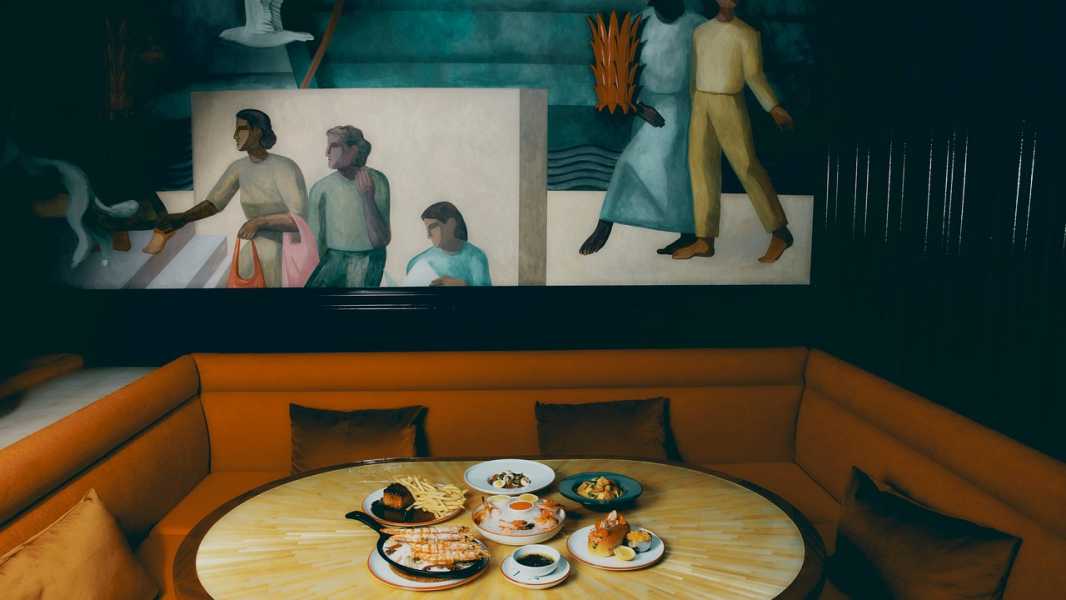
Save this storySave this storySave this storySave this storyYou’re reading the Food Scene newsletter, Helen Rosner’s guide to what, where, and how to eat. Sign up to receive it in your in-box.
Among New York’s restaurant stars, Alex Stupak is one of the most reliably interesting. He made his name, twenty years ago, as the original pastry whiz at Alinea, in Chicago, where he was instrumental in shaping the restaurant’s boundary-pushing idiom of molecular modernism and gastronomic puns with dishes like a vanilla sponge cake that, somehow, also served as its own utensil. He then came to New York to work at wd~50, the now-closed temple to culinary weirdness run by the visionary chef Wylie Dufresne. In 2012, as the molecular-cuisine era was waning, Stupak left it all behind to open Empellón Taqueria and, a year later, Empellón Cocina, casual Mexican restaurants in Lower Manhattan with a slightly goth-punk edge. (Stupak’s wife, the pastry chef Lauren Resler, is Mexican American; he’s said that he became obsessed with the cuisine thanks to his mother-in-law’s cooking.) He brought to tortillas and moles the same rigor he’d brought to his expectation-defying desserts, and the restaurants grew over the years into a mini-empire. The total number of Empellóns seems always to be somewhat in flux; there are currently three casual taquerias and a big, fancy destination restaurant in midtown.
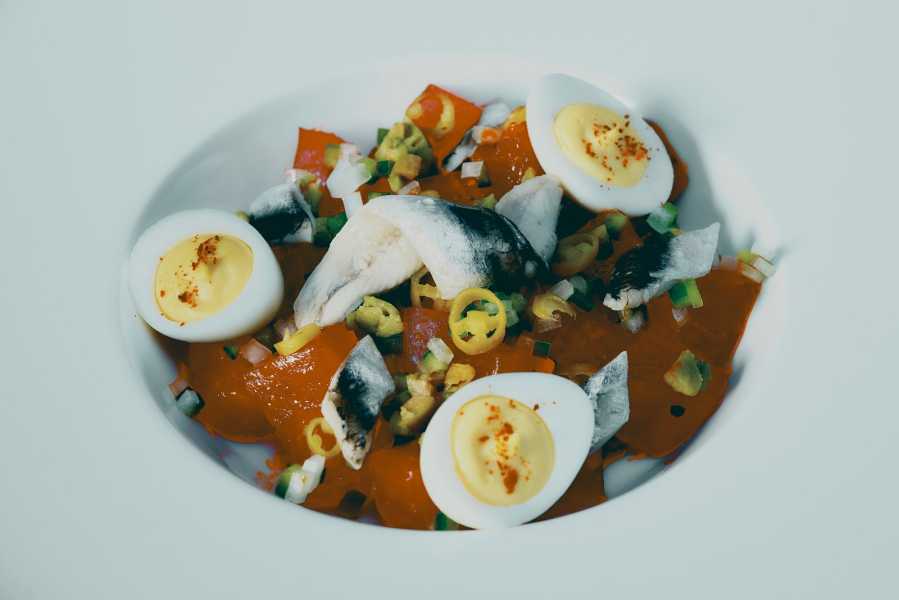
An appetizer of tuna tartare with gilda dressing, a chopped-up relish of green olives, anchovies, and guindilla peppers.
Stupak ventured beyond Mexican fare a few years ago when he opened Mischa, an excellent restaurant that was, alas, doomed. One could blame any number of factors: the vagueness of the concept (sort of Mediterranean? Sort of Mitteleuropean?), the vastness of the dining room, or just the awfulness of the timing—Mischa seemed to be targeting the C-suite lunching crowd, but it opened in 2023, to the dead air of late-pandemic midtown office life. It closed less than a year later, just as return-to-office initiatives were repopulating Manhattan’s expense-account dining rooms. Undaunted, thank goodness, Stupak opened the Otter, on Thompson Street, late last year inside the new Manner hotel, in SoHo. It’s a seafood restaurant—not a fish shack, not a raw bar, but a proper moody bistro, replete with leather and velvet and Art Deco murals. The tables are set with oyster forks. A marble-framed fireplace anchors the back half of the room. The walls are lacquered a deep, thalassic navy blue.
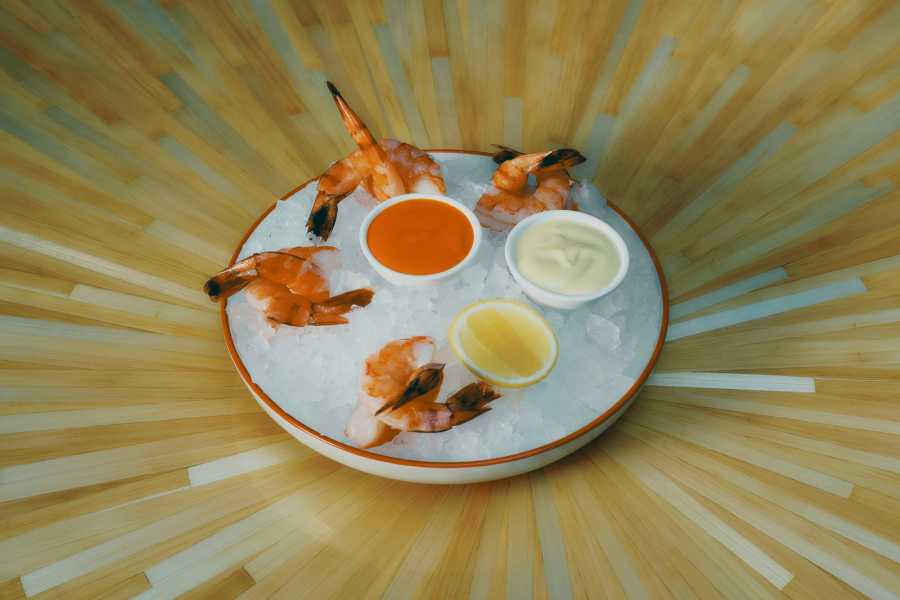
The shrimp cocktail comes with two Basque-inspired sauces, a sultry romesco and a mega-garlicky allioli (the Spanish version of aioli).
Everything about the setting communicates that the Otter is a serious restaurant, but Stupak, to his credit, knows how to keep serious endeavors feeling light. Since his Alinea days, he’s found playful inspiration in high-concept reimaginings: at Empellón, his menus of meticulously researched Mexican dishes occasionally featured specials like tacos inspired by Chicago-style Italian beef sandwiches; at Mischa, he served a twenty-nine-dollar hot dog that was, unbelievably, worth every penny. This kind of high-low play isn’t uncommon in the food world, but it’s tricky to pull off without veering into snobbery or kitsch. What gives Stupak his edge is that he’s never seemed interested in toying with the idea of sophistication (dangerous territory); he’s driven, instead, to explore the relationships, deep and emotional and strange, between form and flavor. A hot dog is just a hot dog; a twenty-nine-dollar hot dog, done right—magnificent in size, with a snappy casing, a garlicky bite, and a lingering smoky taste—makes you start to think about what the boundaries of a hot dog can be.
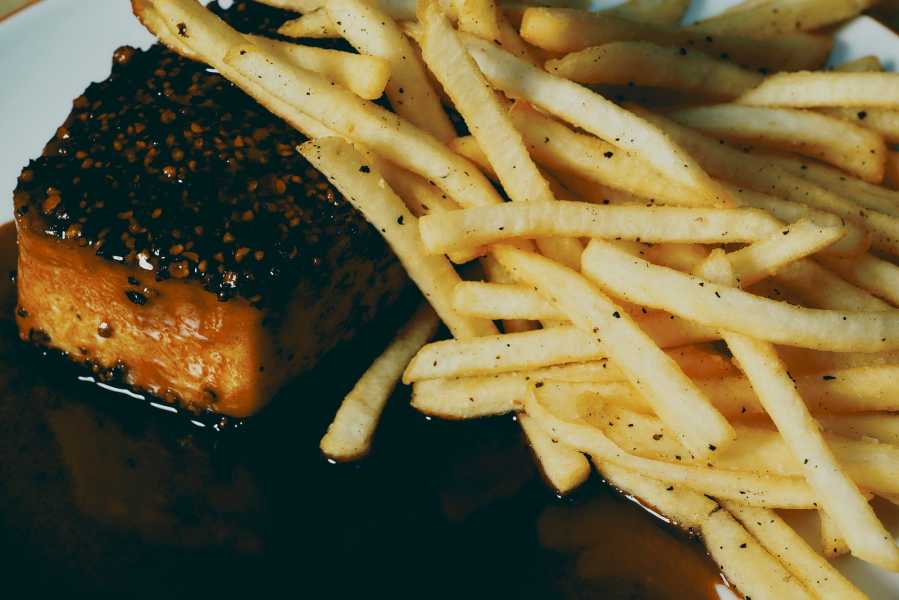
The swordfish frites, with sauce au poivre.
At the Otter, Stupak continues to indulge his impulse to riff and reinterpret and perform tricks of the tongue. A dish called Clams and Shells marries elements of your classic Italian-style clam pasta (garlic, white wine, parsley) with the crisp-toasty profile of Catalan fideuà (sort of like a paella made with short, straight noodles), and drives the pun home with conchiglie, shell-shaped pasta. Tiny, delicate agnolotti are filled with parsley root and cream and presented beneath enormous pieces of crabmeat and a dusting of crushed Ritz crackers. On the table, it’s an elegant bowl of pasta; in the mouth, down to the tiniest speck of pepper, it’s a mid-century cocktail-party crab dip. I found the idea laugh-out-loud funny, though maybe it was the influence of the Seaspray Sour, a whiskey cocktail made bizarre and delicious with the addition of kombu and dill.
This isn’t to say that the menu at the Otter deals only in gimmicks. There’s remarkable grace and ingenuity in an appetizer of tuna tartare in what the menu calls gilda dressing, a chopped-up relish of green olives, anchovies, and guindilla peppers, the traditional ingredients of a Basque pintxo that’s purportedly named for the 1946 Rita Hayworth vehicle. Raw tuna is often presented in ways that emphasize its subtlety and richness; here, instead, all those piquant, pickly bits seem to give the fish’s oceanic sweetness permission to flex and flow, revealing its character the way a few drops of water open up a rare single malt. (The dish comes topped with three tiny devilled quail’s eggs: very cute, totally unnecessary.) A shrimp cocktail is also uncommonly excellent—and that’s saying a lot, in a town that often seems to be overspilling with plump crustaceans on beds of pebbled ice. The Otter’s version is both generous (eight entire shrimp, in this economy?) and unique, with two accompanying sauces, again Basque-inspired: a dense, mega-garlicky allioli (the Spanish version of aioli) and a sultry, deep-red romesco whose silken, nutty smoothness should be no surprise to anyone familiar with Stupak’s prowess with nut-based salsas at Empellón.
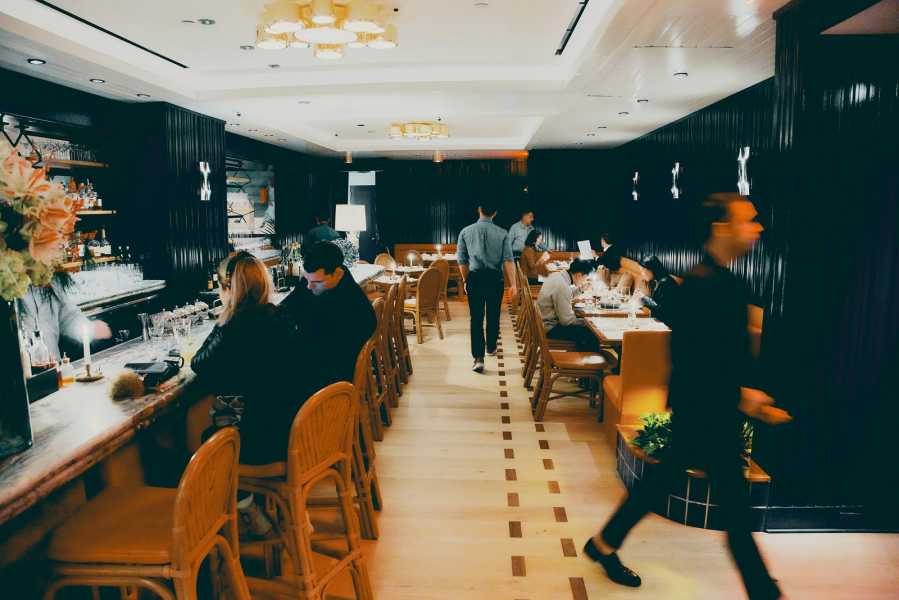
The dining room at the Otter is weighty and masculine, with forgivingly diffuse light from flickering taper candles.
The Basque region is a big influence on the Otter’s ever-changing menu, as is New England (Stupak grew up in Massachusetts), not only in the crab-dip pasta but in a lobster roll (perfectly nice, if you like paying for lobster rolls) and a clam chowder so billowy with cream that it’s almost mousse-like. I had been wary of Stupak’s take on fish and chips, which uses oily, intense Spanish mackerel in lieu of the usual featureless white fish, but my skepticism was unwarranted: the flavor was, indeed, more assertive, but it was balanced beautifully by a beer batter as curly and bronzed as a goldendoodle, plus a kicky, salty tartar sauce. The menu nods, as well, to the Gulf Coast, to the Mediterranean, and to East and Southeast Asia, but the global pantries remain segregated dish by dish. The closest anything comes to fusion is the bread service, which pairs New England-style Parker House rolls, fresh from the oven and marshmallow-soft, with a lineup of compound butters, including one, lusciously saffron-infused, inspired by bouillabaisse, the Provençal seafood stew.
The Otter is quite beautiful. The room is weighty and masculine in an unoppressive way. The people, by virtue of both the SoHo location and the forgivingly diffuse lighting (including flickering taper candles; watch out for the corner of that menu!), are notably gorgeous. A perhaps inevitable upshot of such aesthetic concern is that a few dishes are more exciting to look at than to eat, like a photogenic pair of raw scallops, each served on its own shell, one zhuzhed up in red chile and the other in green, neither tasting of much except salt, lime, and a distant flicker of spice. A centerpiece plateau of dressed seafood, priced per person, is disappointingly constrained where it ought to be dramatic; comprising a tray of pre-portioned little bites on their own tiny plates—including oysters, razor clams, a tuna-uni thing, a bit of smoked salmon panna cotta with trout roe—the arrangement feels like wedding catering (albeit for a very fancy wedding). There’s a steak on offer, a brawny New York strip, cooked to a perfect medium rare but presented, for some reason, next to a pile of vinegary sautéed red bell peppers, and a saucier of funky, fishy crawfish béarnaise. Taken all together, the dish was total nonsense, but I suppose if you’re the kind of person who orders the steak at a place like the Otter you get what you deserve, especially when there’s a terrific swordfish frites right next to it on the menu. A hunk of meaty loin draped in a rich, mahogany sauce au poivre, it’s as close to bovinity as a fish could possibly dream of being.
Helen, Help Me!
E-mail your questions about dining, eating, and anything food-related, and Helen may respond in a future newsletter.
It’s been well over a decade since Stupak left the pastry kitchen, but it would be a mistake to skip dessert at any of his restaurants. At the Otter, there’s a lush, minimalist take on a Boston cream pie, and a pistachio tiramisu green as a fresh-mown suburban lawn, but give yourself the gift of ordering an ice cream. No tidy, freezer-hardened little scooplets here: the portions are big enough for two or three, and come swirled up and around the inside of a ceramic bowl like a frozen whirlpool or, as one of my dining companions noted, like hummus. On one wintry visit, a bite of cantaloupe sorbet rocketed me straight into summer; on another, a plain vanilla ice cream sent my whole party into swoons. Served alongside whatever variety you end up getting are two more bowls, one filled with an olive-oil whipped cream, slightly sweet, slightly savory, the other with a pile of candied grapes, tart little purple spheres like maraschino cherries reflected in a fun-house mirror. During my first meal at the Otter, not long after the restaurant opened, a serving of ice cream cost twenty dollars—awfully high, but I came away feeling that the price was justified. Now a slightly smaller but still substantial portion is nine dollars, the bargain of the century. It’s not a high-wire act, not a wacky food-science ripple in space-time, not a throwback, or a callback, or a play on words—it’s just fantastic ice cream, and it’s more than enough. ♦
Sourse: newyorker.com






